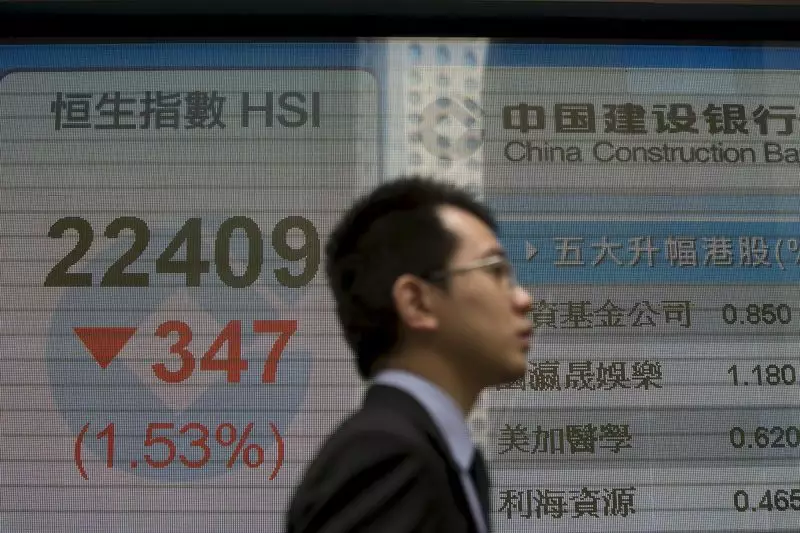Troubling market sentiments swept across Asia on Tuesday as most regional stocks declined, driven by apprehensions regarding future interest rates coupled with the heightened stakes of the upcoming U.S. presidential election. Traders on the continent adopted a risk-averse stance, reflecting a cautious approach as they grappled with shifting financial landscapes. In stark contrast, Chinese markets exhibited a rare uptick, buoyed by recent monetary policy adjustments, specifically an interest rate cut aimed at stimulating economic activity in the region.
Wall Street’s sluggish performance set a bleak tone for Asian markets, with U.S. stock benchmarks experiencing retreats from record levels partially due to rising Treasury yields. The upcoming earnings season amplified concerns, and futures linked to U.S. stock indices displayed slight negativity during Asian trading hours. Investors are now fixated on the U.S. presidential elections, with recent polls indicating a more favorable outlook for the Republican nominee against Vice President Kamala Harris.
Among the significant players in the Asian continent, Japan’s stock market showcased alarming signs of distress. The Nikkei 225 recorded a hefty decline of 1.7%, while the broader TOPIX index fell by 1.1%. This downturn occurred even as the yen languished at its lowest value in nearly three months, underlining concerns over the Bank of Japan’s (BOJ) monetary policy responsiveness. As the yen generally strengthens when foreign exchange markets digest potential interest rate hikes, its weakness raised questions about Japan’s export dynamics.
Furthermore, Japan is set to hold its general elections later this month, an event anticipated to draw considerable investor attention amidst the BOJ’s scheduled meeting, coinciding with upcoming inflation data releases. This data could significantly influence perceptions regarding Japan’s economic policies and interest rate strategies.
Other key Asian markets fell victim to similar pressures. In South Korea, the KOSPI index dipped by over 1%, while Australia’s ASX 200 experienced a notable 1.4% drop, marking a period of profit-taking after the index reached unprecedented highs earlier this month. On the other hand, advancements in the Indian market appeared restrained as the Nifty 50 index opened to a flat response, attributed to profit-taking amidst moderate earnings reports from large corporations.
In sharp contrast to the regional bearish trend, Chinese markets emerged as an exception, exhibiting a modest rise across major indexes. The Shanghai Composite and the Shanghai Shenzhen CSI 300 saw increases, driven by a larger-than-expected cut to the People’s Bank of China’s benchmark loan prime rate—a move characteristic of the government’s broader strategy to bolster economic growth. The Hang Seng index in Hong Kong also benefited, adding 0.4% as investors reacted positively to the rate cut.
Overall, the interplay of economic policies, election outcomes, and market dynamics paints a complex picture for Asian investors. While some markets face significant headwinds, others are aggressively maneuvering through strategic policy adjustments. As stakeholders navigate this landscape marked by uncertainty, vigilance, and adaptability will be essential in making informed investment decisions moving forward.

